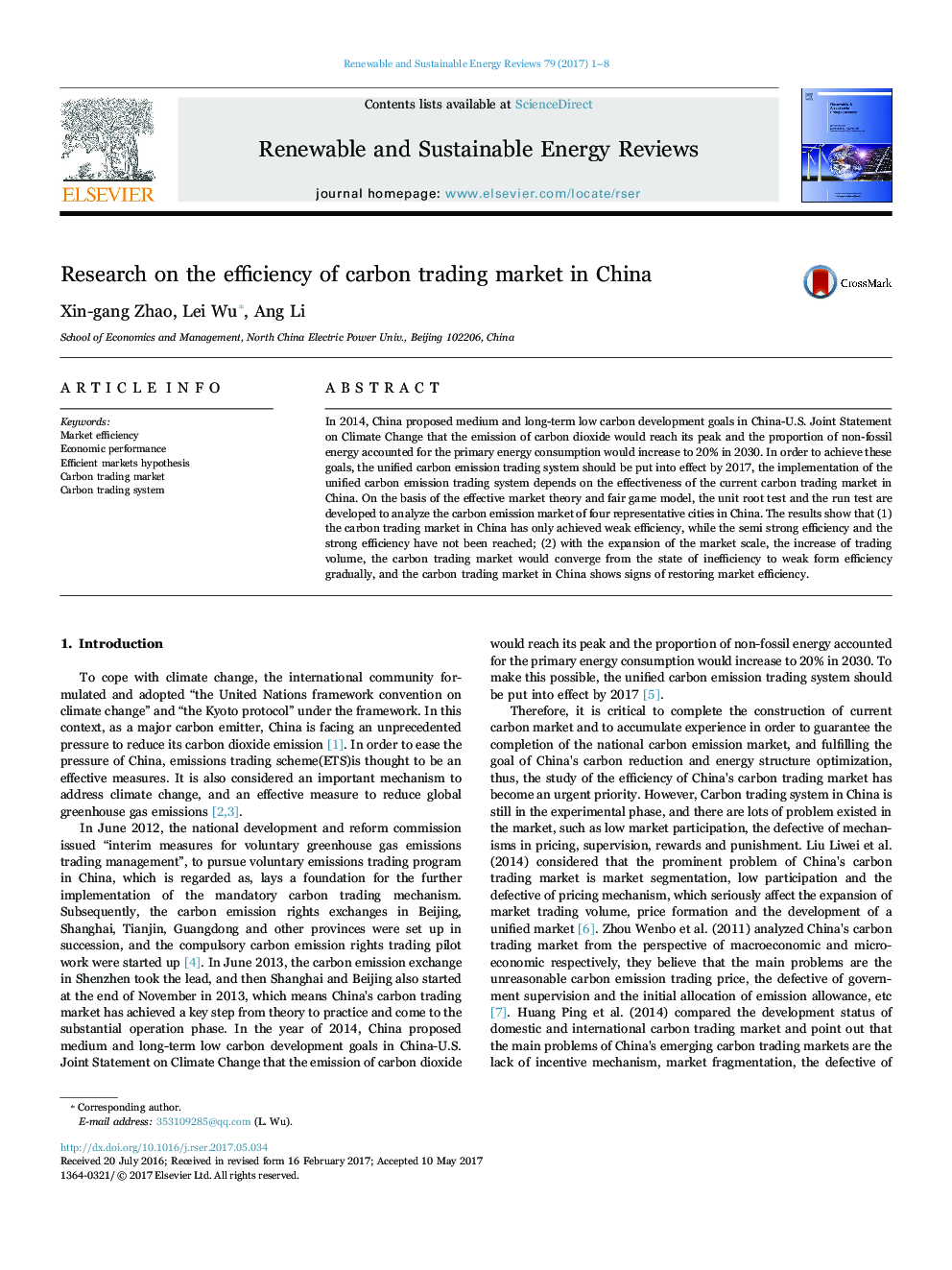| Article ID | Journal | Published Year | Pages | File Type |
|---|---|---|---|---|
| 5482547 | Renewable and Sustainable Energy Reviews | 2017 | 8 Pages |
Abstract
In 2014, China proposed medium and long-term low carbon development goals in China-U.S. Joint Statement on Climate Change that the emission of carbon dioxide would reach its peak and the proportion of non-fossil energy accounted for the primary energy consumption would increase to 20% in 2030. In order to achieve these goals, the unified carbon emission trading system should be put into effect by 2017, the implementation of the unified carbon emission trading system depends on the effectiveness of the current carbon trading market in China. On the basis of the effective market theory and fair game model, the unit root test and the run test are developed to analyze the carbon emission market of four representative cities in China. The results show that (1) the carbon trading market in China has only achieved weak efficiency, while the semi strong efficiency and the strong efficiency have not been reached; (2) with the expansion of the market scale, the increase of trading volume, the carbon trading market would converge from the state of inefficiency to weak form efficiency gradually, and the carbon trading market in China shows signs of restoring market efficiency.
Related Topics
Physical Sciences and Engineering
Energy
Renewable Energy, Sustainability and the Environment
Authors
Xin-gang Zhao, Lei Wu, Ang Li,
